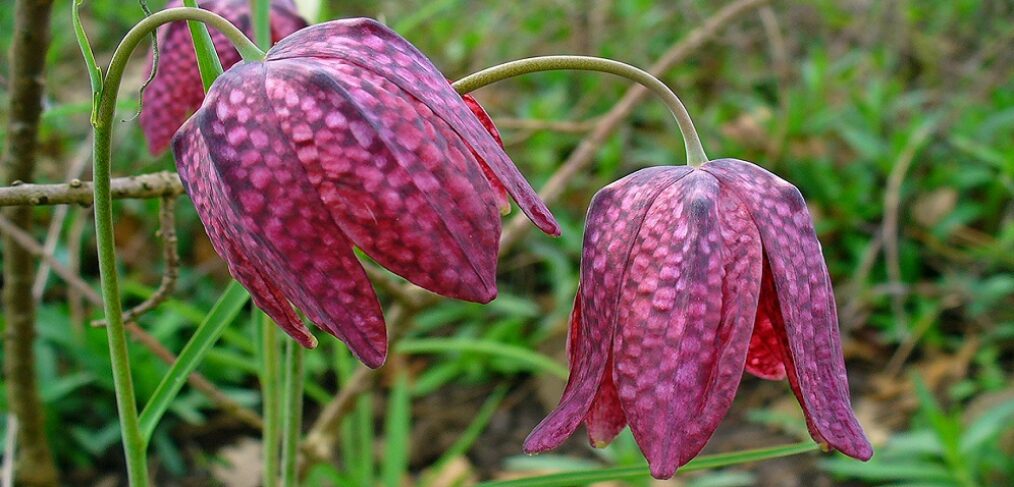
species of the week #56 – chess flower
The chess flower is also known as the checkerboard flower or peewit egg. Its name quickly becomes apparent when you see its flowers: They show a chequerboard-like pattern, usually in a darker and a lighter shade of purple. However, there is also a white checkerboard flower in which the typical pattern is still clearly visible as shading.
| Distribution status | Extinct in Rhineland-Palatinate |
| Remaining deposits | Botanical Garden Mainz, Mecklenburg, Spessart |
| Last sighting in rhineland-palatinate | 1994 Saarburg |
| Habitat | Lean, marshy but sunny meadows |
| Threat | Drainage, overfertilisation, climate change |
This species, which belongs to the lily family, originates from the Mediterranean region and the Near East. From there it was probably brought to Central Europe as a garden plant in the 16th century. In the 17th century, it was one of the most popular ornamental plants in Baroque gardens, but fell out of fashion in the course of the 19th century. In the Spessart region, annual chess flower festivals with guided tours are held in Obersinn and Altengronau at the end of April.
As an ecological prerequisite, it needs air-poor, moderately nitrogen-rich, neutral loam and clay soils. The chessflower is highly endangered in Germany due to the destruction of its natural habitats, such as wet meadows, floodplain forests and floodplains. The plant reacts sensitively to slurry fertilisation, drainage and too early mowing and can now only be found in larger stands on the Hesse-Bavaria border and near Hamburg.
The chess flower seeds contain small cavities and can thus be transported by flooding or floating on watercourses; the plants also form small breeding bulbs. Last wild stocks must not be dug up under any circumstances. For some years now, many nurseries have been offering offspring in many colours, from white to violet-grey, for the home garden.
Political necessity:
– Promote watering and meadow irrigation.
– Effective prevention of overfertilisation
Image: By H. Zell – Own work, CC BY-SA 3.0, https://commons.wikimedia.org/w/index.php?curid=10152536
